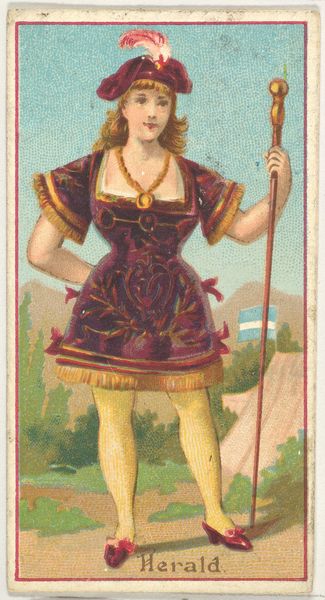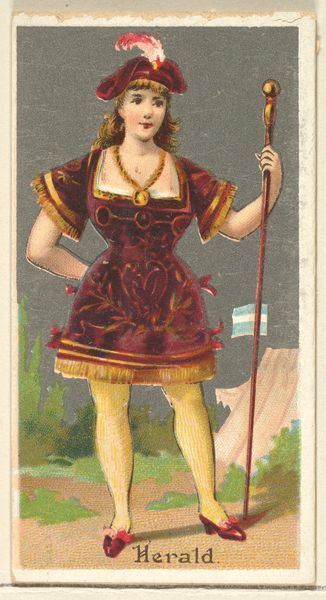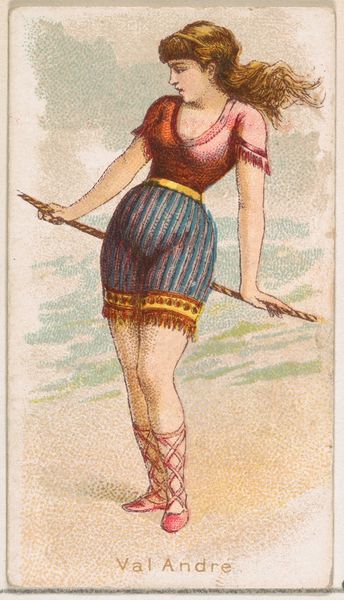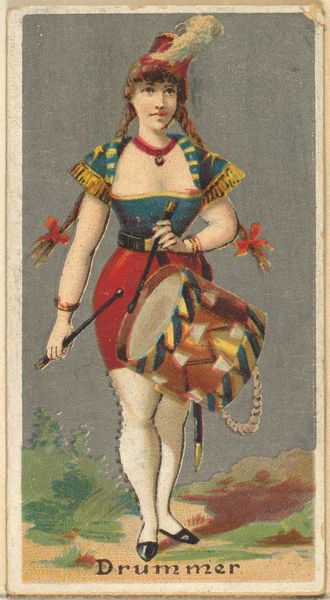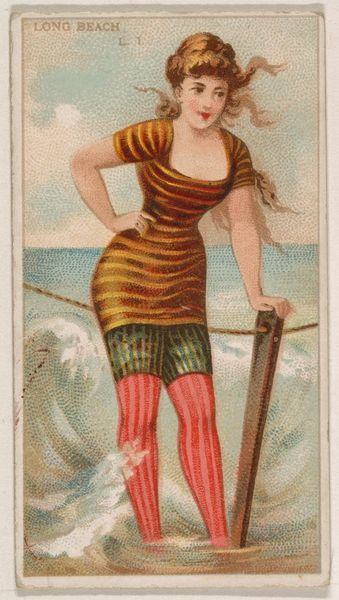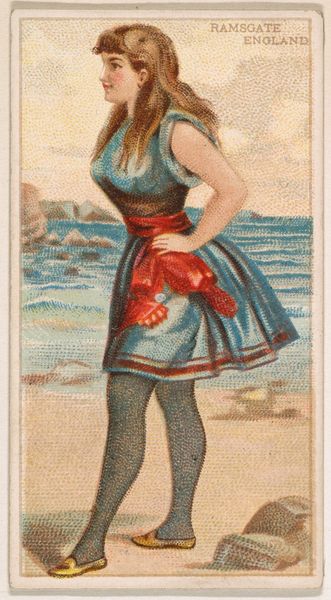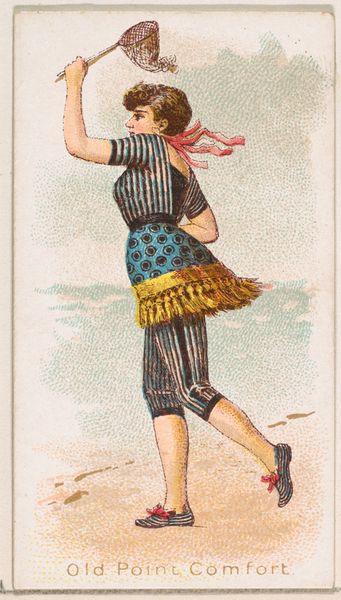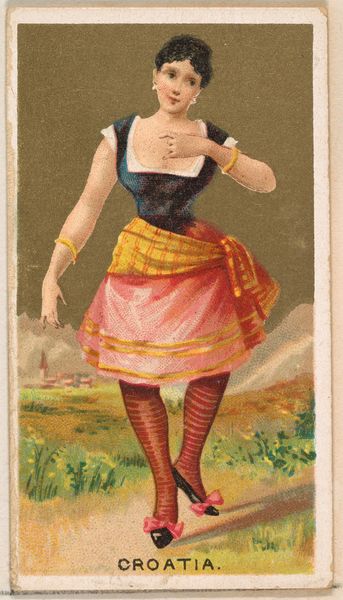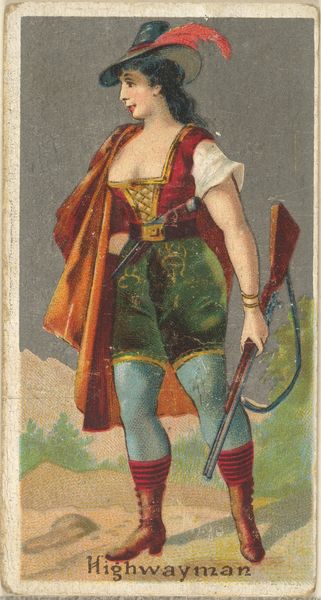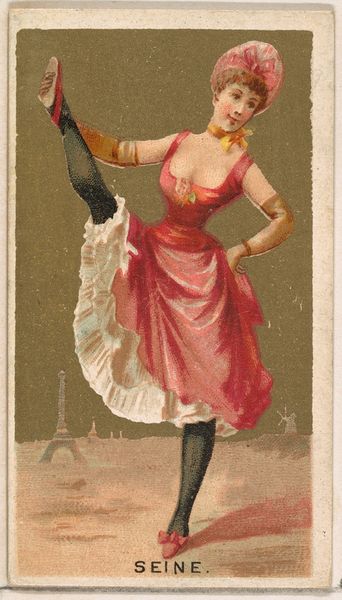
Calais, France, from the Surf Beauties series (N232), issued by Kinney Bros. 1889
0:00
0:00
lithograph, print, photography
#
portrait
#
lithograph
# print
#
figuration
#
photography
#
orientalism
#
genre-painting
Dimensions: Sheet: 2 3/4 × 1 1/2 in. (7 × 3.8 cm)
Copyright: Public Domain
Editor: Here we have "Calais, France, from the Surf Beauties series," a lithograph print from 1889 by the Kinney Brothers Tobacco Company. It depicts a woman in what I assume is swimwear, wading in water. The colors are quite vibrant. I'm curious about the context in which this print was made and what might have been the intent of the artist? Curator: The print, produced by a tobacco company, inherently links art to commerce and consumerism. The lithographic process itself – a relatively cheap and reproducible technique – facilitated the mass production of these images. These "Surf Beauties" were, in essence, commodities, traded alongside tobacco. What does that suggest about the representation of women and leisure in this period? Editor: That's interesting! I hadn't thought of it that way. So the image itself becomes a tool for selling a completely unrelated product? I guess I was focusing too much on the aesthetic value. Curator: Exactly. Consider the "Orientalist" elements within this image – while labeled as "Calais, France," are there details in the figure's clothing or pose that don't quite align with that reality? How might these choices, even subtle ones, reflect and reinforce colonial attitudes toward the exotic "Other", even in a mundane advertisement? It's also worth exploring labor involved, both the factory workers making the tobacco, the printing and even the distribution, compared with images of leisure portrayed. What boundaries, real or imagined, are implied in the making of this artwork? Editor: So, instead of seeing just a pretty picture, we're really seeing a reflection of industrial practices, cultural biases, and even colonial undertones packaged and sold. It’s made me rethink my initial assumptions. Curator: Precisely. By interrogating the materials, production methods, and intended audience, we gain a much richer understanding of the print and its place within a specific moment in history. Hopefully, it shows the ways that consumer goods and the industrial age shape not just daily lives, but artistic expression, too. Editor: Absolutely. I see the layers of meaning now. Thank you for offering this lens.
Comments
No comments
Be the first to comment and join the conversation on the ultimate creative platform.

